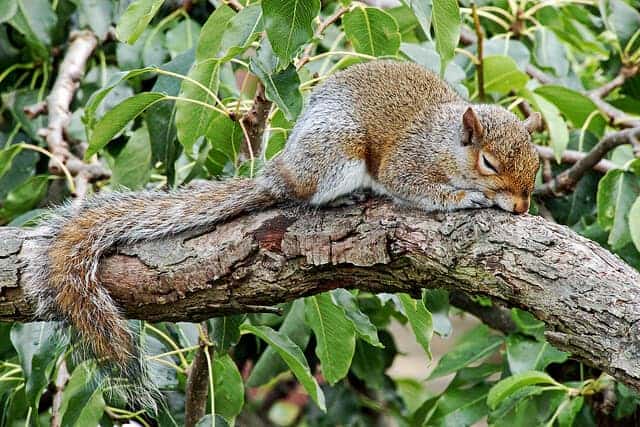A new study suggests that hibernating squirrels may hold the key to mitigating the devastating effect of stroke in humans.
Squirrels may be a surprising source of potential life-saving stroke therapy, but researchers say that their neural processes during hibernation shed significant light on how humans may withstand the trauma of stroke, which severely reduces blood flow to the brain.
 During hibernation, a squirrel’s brain undergoes the same type of reduced blood flow, yet the animals don’t experience any negative effects after waking from their long slumber.
During hibernation, a squirrel’s brain undergoes the same type of reduced blood flow, yet the animals don’t experience any negative effects after waking from their long slumber.
By assessing the exact cellular changes that occur during the squirrels’ hibernation period, scientists have identified a drug that could give humans an effective antidote to the brain-damaging effects of stroke.
“For decades scientists have been searching for an effective brain-protecting stroke therapy to no avail. If the compound identified in this study successfully reduces tissue death and improves recovery in further experiments, it could lead to new approaches for preserving brain cells after an ischemic stroke,” said Dr. Francesca Bosetti, program director at the National Institute of Neurological Disorders and Stroke (NINDS).
During an ischemic stroke, the most prevalent type of stroke, a blood clot deprives the brain of needed oxygen, which can result in disability and, often, death. Some 800,000 individuals suffer a stroke every year in the U.S., and the American Heart Association calls stroke “the leading preventable cause of disability.” Stroke also accounts for about one in 20 deaths in the country.
A Closer Look
Current stroke treatments seek to remove the blood clot as quickly as possible to avoid long-term damage to brain cells that can impact a person’s motion and functioning. However, mapping squirrels’ neural networks during hibernation, scientists have taken the first step to identifying a way to help brain cells survive after a stroke hits and have opened up a new path to treatment.
The researchers discovered that the brains of the hibernating animals are activated in a specific way that helps them survive the low-blood-flow environment. Specifically, “a cellular process called SUMOylation goes into overdrive,” report the study authors.
Related: Diet Soda May Be Linked to Stroke, Dementia
SUMOylation refers to the process that occurs when a molecular tag known as a small ubiquitin-like modifier (SUMO) attaches to a protein, which changes how brain cells act and move around. Turning to computer modeling and then rat studies, the researchers narrowed down a list of thousands of molecules already known to scientists to two that can “both boost SUMOylation in rat cells and keep them alive in the absence of oxygen and glucose.”
“If we could only turn on the process hibernators appear to use to protect their brains, we could help protect the brain during a stroke and ultimately help people recover,” said study first author Joshua Bernstock, a graduate student in Dr. Hallenbeck’s lab.
The researchers plan to test one of the SUMOylation-boosting molecules called ebselen in forthcoming animal tests. They also believe their pioneering work may lead to further developments for the treatment of other neurological conditions.
“As a physician-scientist, I really like to work on projects that have clear relevance for patients,” Bernstock said. “I always want outcomes that can lend themselves to new therapeutics for people who are in need.”
Richard Scott is a health care reporter focusing on health policy and public health. Richard keeps tabs on national health trends from his Philadelphia location and is an active member of the Association of Health Care Journalists.


![How To: ‘Fix’ Crepey Skin [Watch]](https://cdn.vitalupdates.com/wp-content/uploads/2017/05/bhmdad.png)












